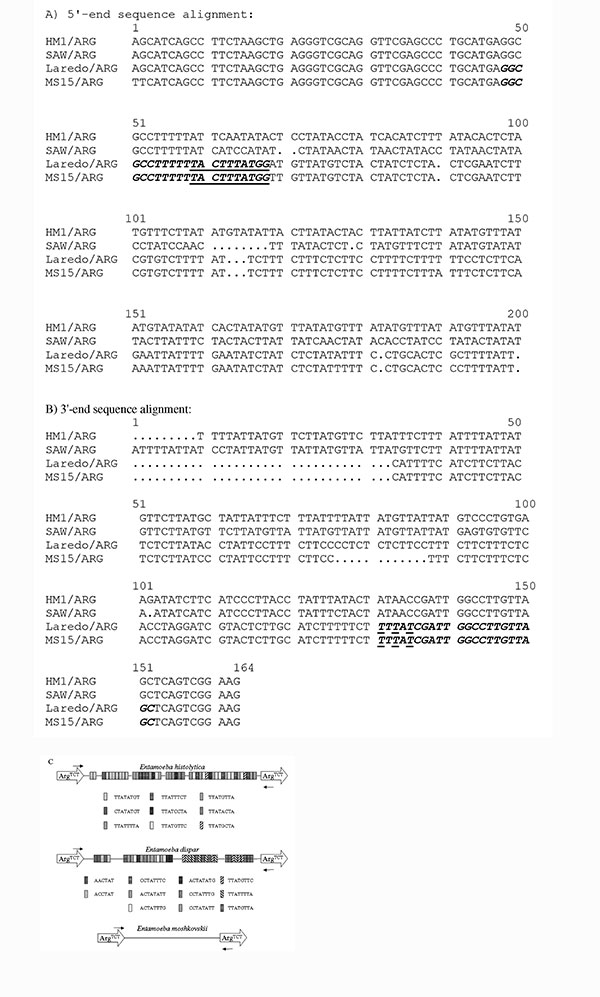Volume 9, Number 5—May 2003
Research
Entamoeba moshkovskii Infections in Children in Bangladesh
Figure 2

Figure 2. ArgTCT locus. ArgTCT sequences from Entamoeba histolytica HM-1:IMSS (GenBank accession no. AZ535059), E. dispar SAW760 (GenBank accession no. AF 525284), E. moshkovskii Laredo (GenBank accession no. AF 525285), and MS15-3646 (GenBank accession no. AF525286) were aligned at the 5´(A) and 3´ (B) ends to design E. moshkovskii–specific primers. The EmR primer sequences are shown in italic and bold with E. moshkovskii–specific positions underlined. C. Schematic representation of ArgTCT loci from E. histolytica HM-1:IMSS, E. dispar SAW760, and E. moshkovskii. Locations of the primers used in polymerase chain reaction amplification are indicated by small arrows, the tRNA genes are indicated by large arrows, and the short tandem repeats by shaded boxes (not to scale.)